Have adults ruined children's sport?
- Published
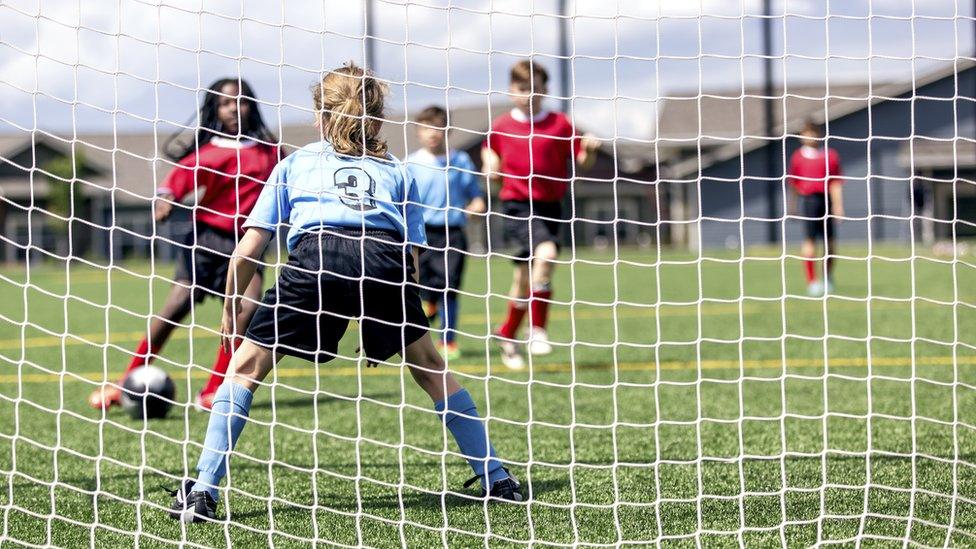
Children's participation in sport is falling, leading to concerns about their health. But are the adults doing much of the worrying at least partly to blame?
In the US, sports from football (soccer in the US) to basketball and baseball to volleyball have seen a sharp decline in the number of children playing on a regular basis.
The shift away from these and other sports has coincided with warnings that only one in three children is physically active every day, and one in five is obese.
And it's not just the US - concerns about the sedentary habits of youth are heard in countries all over the world.
But could it be that some children have been driven away from sport by adults forgetting it's all supposed to be fun?
'I don't like pressure'
Children are rarely consulted about what they want from sport, but ask them, as the Aspen Institute's Sports & Society Program did at its annual Project Play Summit, external, and they offer strong insights.
Coaches "need to be more patient", one nine-year-old who plays football in Maryland told us. "If you miss [a goal], they make you run around the field."
Another child, who runs track in New York state, said: "I don't like coaches putting pressure on you and thinking that [you have to] win."
Sport leaders ignore such views at their peril.
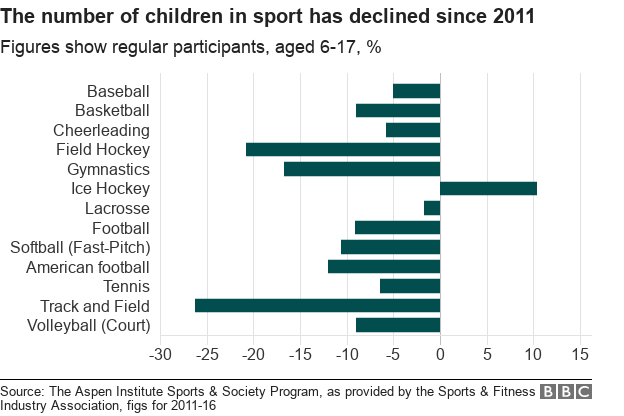
A study by George Washington University found that what children wanted most from sport was the chance to play and to try their best, guided by a coach who respects them.
Of the 81 reasons they gave for why sports were fun, "winning" came 48th, "playing in tournaments" 63rd and "travelling to new places to play" 73rd.
Children's wishes, however, are not always put first, as parents compete to provide what they believe are the best opportunities.
In the US, for instance, there may be no better example of the state of play than the growth of the "tournacation", a term merging "tournament" and "vacation".
Drawing in "elite" teams that form around children as young as seven, these squads can travel long distances to play.
At one of the nation's largest children's football tournaments, in rural New Jersey, a drone in flight is best positioned to see the scale of such an event.
Up there, you can see the 75 pristine pitches that will host more than 600 teams of children aged nine to 14, chasing shiny balls, in shiny uniforms.
The cars of thousands of parents mass at the playing fields' edge.
A two-day event such as this is an opportunity for organisers to make serious money, in this case up to $1,250 (£940) per team.
That's on top of travel and hotel costs of as much as $500 (£375) and the $3,000 (£2,250) or more many parents pay each year to their child's club.
It is an industry built on the wallets of parents, and the chase for opportunities to play in college, perhaps with a scholarship.
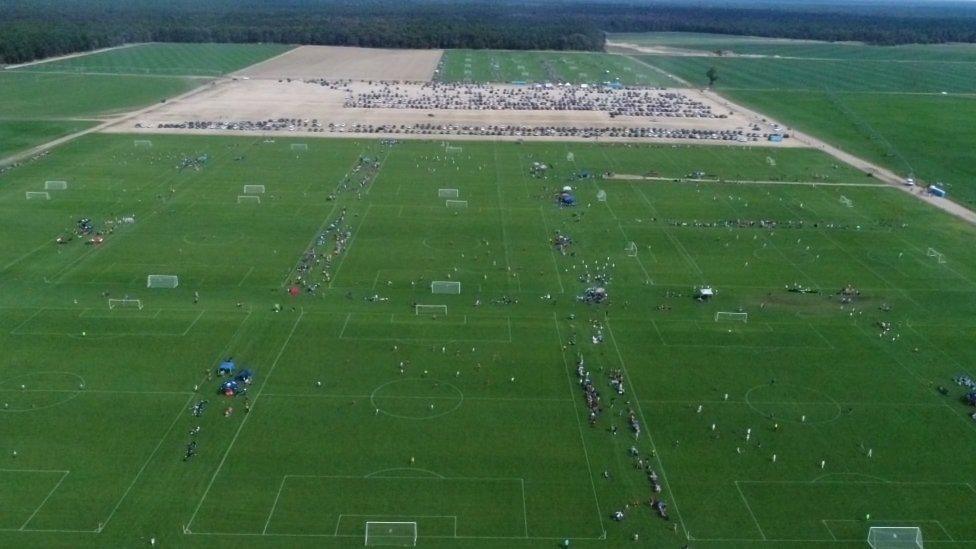
What the drone can't see is how many other children - those who aren't early bloomers, or whose families don't have the funds, or time, to take part - have fallen away from the game.
They are often unable to join the best teams, which have the best coaches, training environments, and access to college scouts.
Football has declined among those left behind, with fewer children joining either local teams, or playing informal games in the park.
Since 2011, the number of six- to 17-year-olds who play football regularly has fallen 9%, to 4.2 million, according to the Sports and Fitness Industry Association.
The number of children who touch a football at least once a year, in any setting, was down 15%.
The issues were highlighted when Hope Solo, goalkeeper for the world champion national women's team, announced she was running for president of the US Soccer Federation, external.
She said the system overlooked "the disadvantaged because of an arrogant belief that the United States possesses the world's best athletes, so therefore we can get away without having the world's best soccer players".
The knock-on effects are not difficult to see.
The failure of the men's team to qualify for the 2018 World Cup, some of the game's leaders now recognise, is at least partly the consequence of a system that often places money above the development of talent - starting with its youngest prospects.
Future obese adults
Youth sport in the US has been described as a $15bn (£11bn) industry.
That's larger than the National Football League, National Basketball Association or English Premier League.
But the decline seen by football has been mirrored in other sports.
The number of children taking part in track and field has fallen 26% over the past five years, with field hockey down 21%, gymnastics down 17% and American football down 12%.
Designing sport around what children want - and families can afford - would also benefit public health.
If all 12.7 million obese children in the US become obese adults, the societal costs may exceed $1.1tn, according to the Brookings Institute.
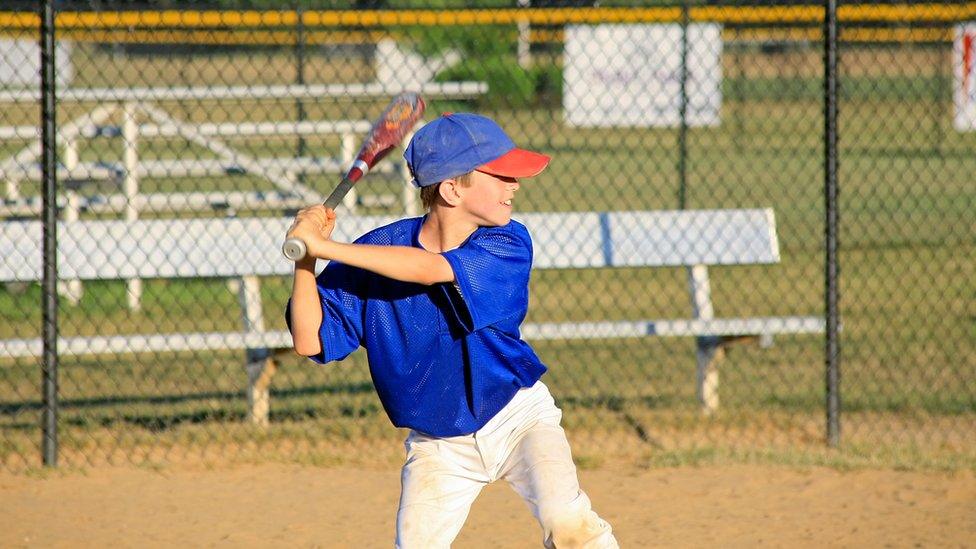
The challenge for sport leaders - who want to find players who can win - is how to align their needs with those of public health, and children.
In the US, the gold standard is ice hockey, which has reversed participation declines by promoting "cross-ice hockey".
By creating three smaller playing surfaces on one sheet of ice, the format gets more kids on skates at lower cost.
The national governing body for ice hockey has also reduced the pressure they face by discouraging national championships until after the age of 12.
Football has yet to embrace such reforms.
However, even those at the centre of the industry recognise the benefits.
Rather than put children into travel teams at an early age, it could be better to prioritise local games, giving classmates the chance to play and develop together, some say.
They would also have more chances to try out different sports, discovering which best suits them.
Others suggest that work is needed to include children of all backgrounds.
For example, football is popular in Hispanic communities, but families often lack the resources to join clubs.
This could be the reason why Latinos below the age of 18 make up 25% of the US population within that age group, but only 12% of male and 7% of female college players.
One response, in the majority Hispanic city of San Antonio, has been the development of an urban football league.
"Those are the populations not being served, that are very hard to get to, and that we are focused on," says former mayor and league organiser Ed Garza.
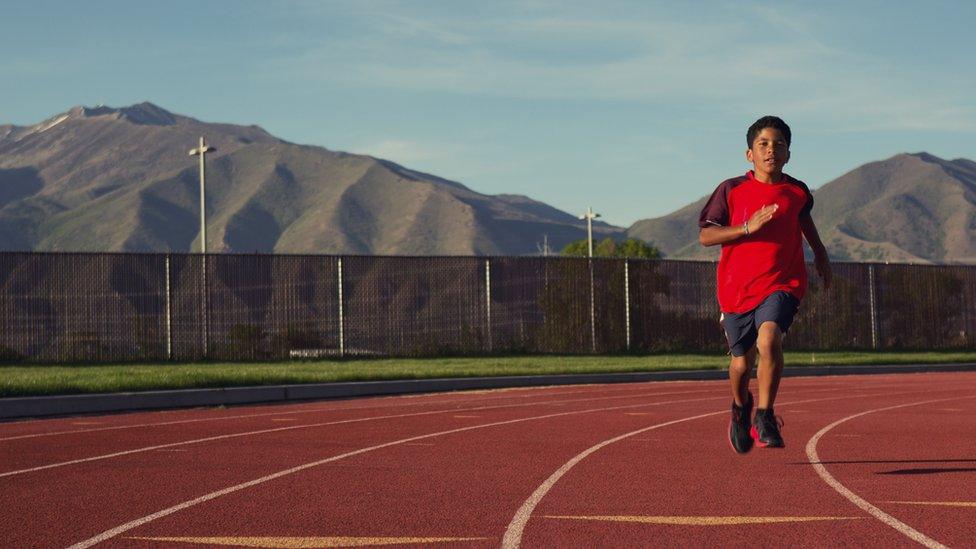
Another response could be greater transparency about the availability of college scholarships, which parents are so often chasing.
Only 3% of players coming out of high school receive any aid to play at the highest level of college football and "full rides" are even rarer.
"Parents get caught up in all this money," says Josh Krusewski, of the Connecticut Junior Soccer Association. "There is no money."
To keep ambitions in proportion and avoid player burnout, parents need to learn about how their child can develop properly as an athlete, says Kevin Payne, head of US Club Soccer.
Barring that, there is also the option of introducing some creative thinking.
This year, to reduce referee abuse, South Carolina banned spectators from yelling during play for a month.
Officials report that Silent September drew few complaints.
Once they adjusted the policy to allow cheering after goals, parents fell in line.
Well, most of them, at least.

About this piece
This analysis piece was commissioned by the BBC from an expert working for an outside organisation.
Tom Farrey, external is executive director of the Sports and Society Program at the Aspen Institute, external, which describes itself as a non-partisan forum for values-based leadership and the exchange of ideas.
The Project Play, external initiative aims to build healthy communities through sports and shares resources, including its parent checklists, external.

Edited by Duncan Walker
